Sowing tomatoes was the big moment in the garden last week. The sowing was actually indoors and it was on April 1st, which is 6 weeks before the “average date of the last killing frost,” or, to those in the know, ADLKF.
I’m finicky about what varieties to grow because good tomatoes just waste garden space, never getting eaten if great-tasting tomatoes, are also to be had. But look at tomato variety descriptions in seed catalogues and on seed packets, and you’d think that every tomato variety tastes great and is worth growing.
I read those descriptors carefully to narrow the field. For starters, I avoid any tomato listed as “determinate.” Determinate varieties grow by branching repeatedly because each stem ends in a cluster of fruits. The plants are compact and ripen their fruits over a short season, which appeals to commercial growers. Downsides are that their lower leaf to fruit ratio results in poor flavor and concentrated ripening causes more stress and, hence, susceptibility to diseases.
So I grow only “indeterminate” varieties, whose clusters of fruits hang from along their ever elongating (indeterminate in length) stems. These are the varieties that can be pruned for staking.
Short of tasting a particular variety of tomato, the next descriptor that would guide me is whether or not it’s a “potato leaf” variety. Yes, their leaves look like those of potatoes (a close relative), that is, thicker and with smooth, rather than serrated edges. Still, a lot of great-tasting tomatoes are not potato-leaved.
Pink, heart-shaped tomatoes also have the edge on flavor. Same goes for tomatoes that don’t ripen to a
 |
| Two great tomatoes: Cherokee Purple & Amish Paste |
uniform red color. Or tomatoes that don’t ripen to perfectly round orbs. I also happen to like dark colored — so-called “black” — varieties. You could almost say that the uglier the tomato (by commercial standards) the better the flavor. Which is not to say that every tomato variety bearing ugly fruits is great-tasting; but it’s a start.
——————————–
A man (or woman, or child) can grow only so many tomatoes. This year I narrowed my lineup to 16 varieties, some old favorites and a few new ones, the new ones chosen on the basis of being indeterminate, perhaps potato-leaved, etc.
The old favorites are Belgian Giant, Anna Russian (good cooked and fresh), San Marzano (good cooked, bad fresh), Cherokee Purple, Blue Beech (good fresh and with unique, good flavor cooked), Amish Paste (good
 |
| Some of last year’s tomatoes |
cooked and fresh), Rose de Berne, Valencia (orange fruit), and Nepal. Also two cherry tomatoes, Sungold and Gardener’s Delight. The latter was my favorite decades ago and I’m curious now how it compares with the incomparable Sungold.
New varieties for this year are Brandywine Black, Black Prince, Cherokee Chocolate, German Giant, and Black Krim.
—————————————
Whew! That’s a lotta’ tomatoes.
Even with a greenhouse, indoor planting space is at a premium. Besides those 16 varieties of tomatoes, with plans for at least 4 plants of each variety, I have dozens of other vegetable seedlings — broccoli, lettuce, kale, Brussels sprouts, pepper, eggplant, and more — growing or in the works. And multiple varieties of each.
I’m managing all this by starting out sowing seeds in what look like miniature fields. These “fields” are 4 by 6 inch seed flats, filled with potting soil into which I press 4 furrows with my MFT (my “mini-furrowing tool”). MFT is a 4 by 6 piece of plywood with a handle on its upper side and four, spaced out, 1/4 inch diameter dowels glued to its underside. Into the furrows impressed by the dowels I sprinkle the seeds, cover the furrows, and then smooth the “field” with a similar plywood rectangle lacking the dowel underbelly. The seedlings, when they sprout, look like miniature fields of plants.
Once sprouts unfold their second sets of leaves, they’re ready to be “pricked out” and given their own home. That home could be a pot or a cell in a plastic tray of multiple cells. Sliding a small, blunt knife into the potting soil beneath a seedling lets me gingerly grab its leaves and lift it out with roots intact to be dropped
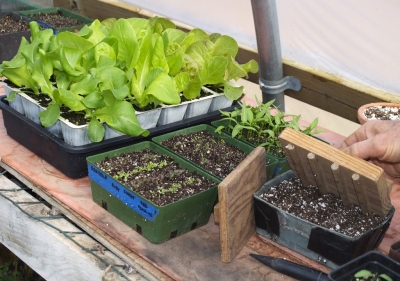 |
| A lot of seedlings in a little space. |
into a waiting hole I’ve dibbled with my cone shaped “dibbler.” As each seedling is in place I tuck potting soil in around its roots. Without delay, once a tray of seedlings has been pricked out, I spray a gentle but thorough mist of water to moisten the soil and settle the little sprouts into place without knocking them down.
Seeds and very young sprouts spend one or more weeks — four in the case of slow-germinating and growing celery — in the seed flats, and then another four weeks or so in their cells. That translates to 50 or more seedling in an area 4 by 6 inches for a couple of weeks and then about 20 older seedlings growing up in a space of about a square foot for the next four weeks.
All this not only squeezes oodles of seedlings into relatively small space; it also keeps me intimate with them in their youth. I’ll be planting tomato seedlings out in the garden one week after the ADLKF.
—————————————————-




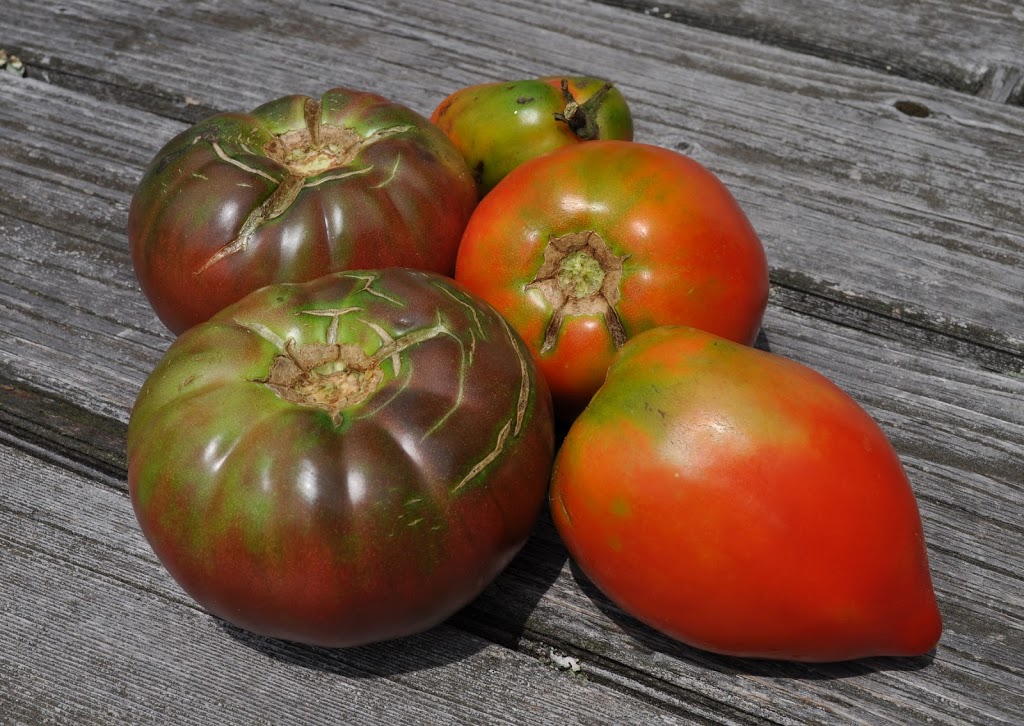

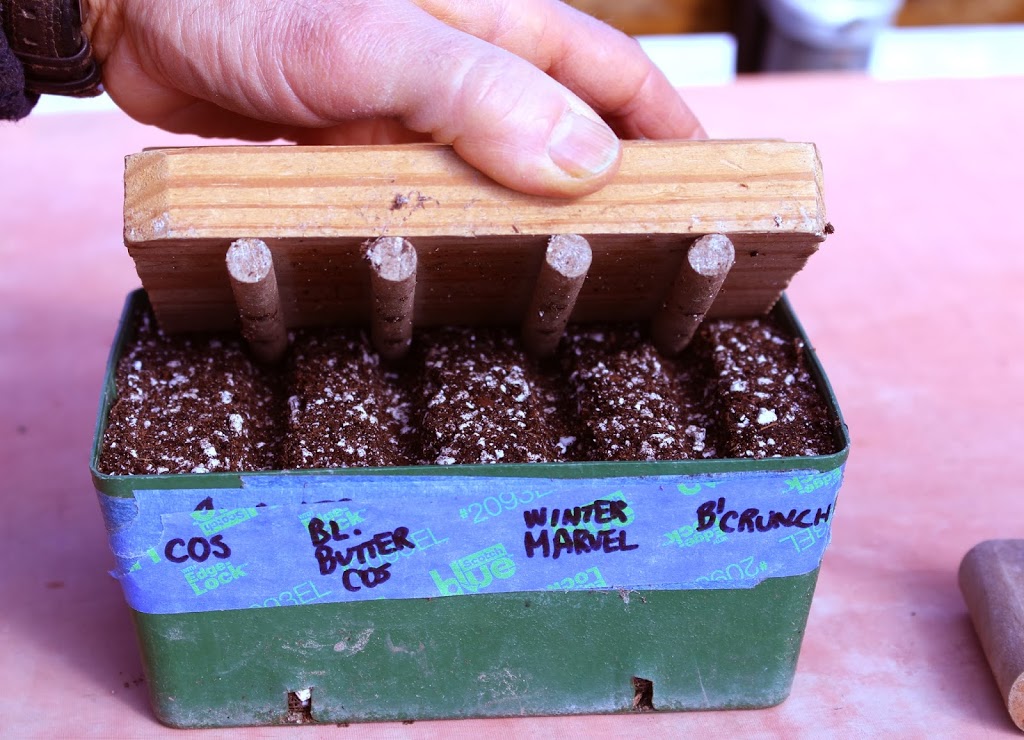


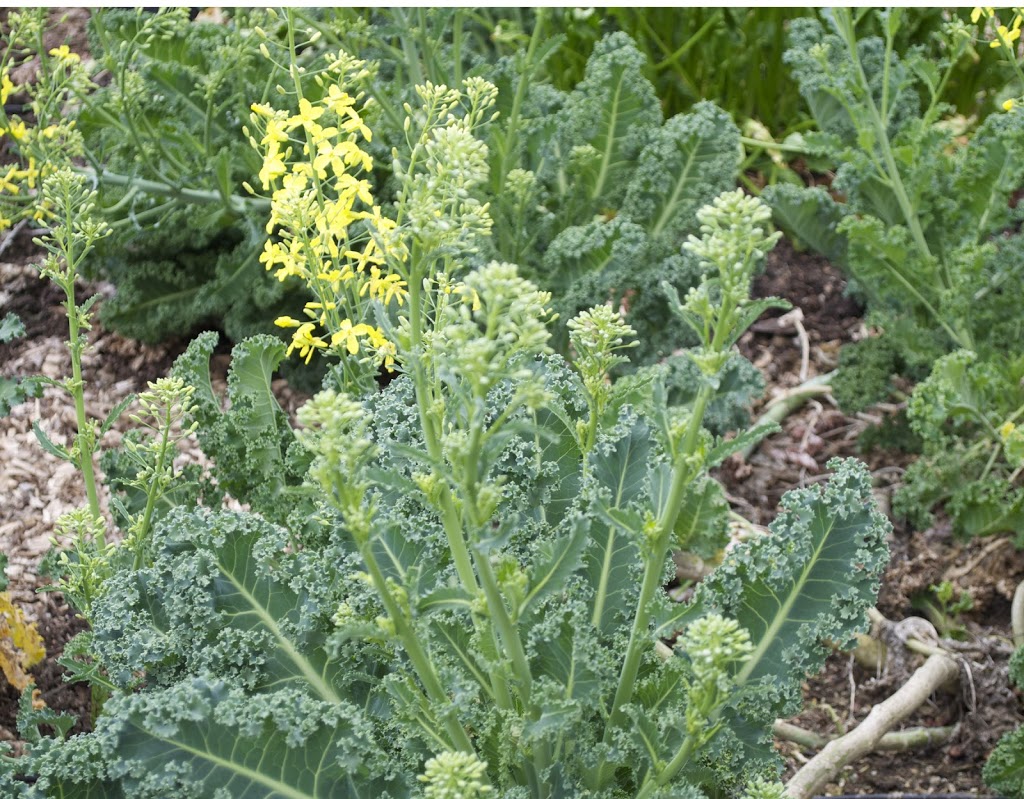
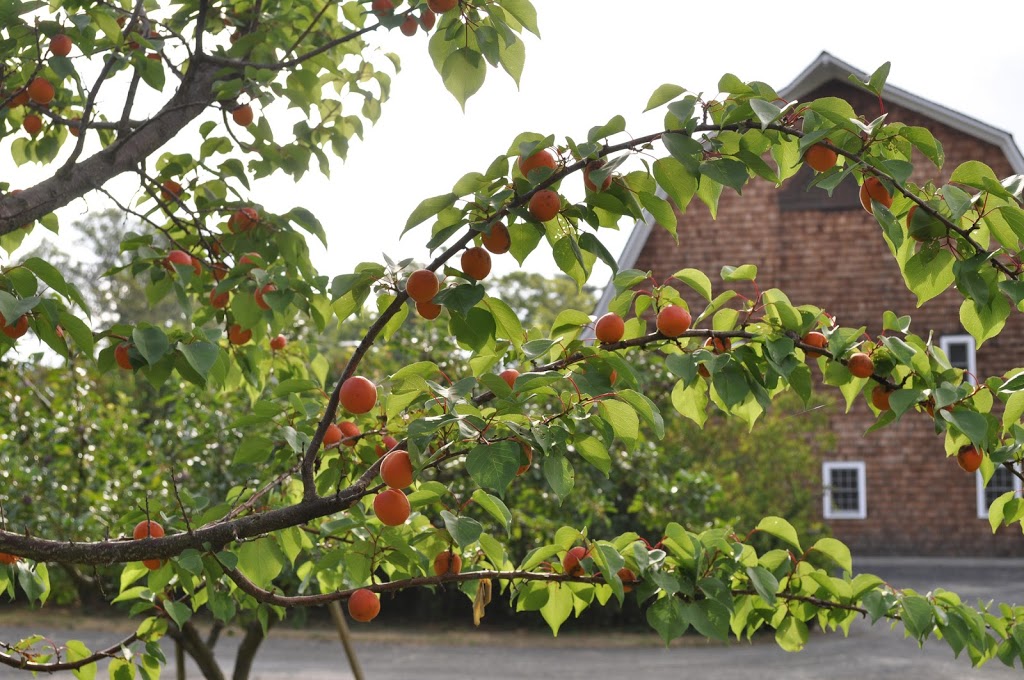
In 2012 late blight hit my garden at Vassar Farm 7/30 and at home on 8/15. The only survivor was my single Mountain Magic plant which made it to frost despite bad septoria.
This year my selection includes a plum at 70 days (I’m hoping to harvest my canning tomatoes before late blight hits), 3 late blight resistant varieties (Mountain Magic, Defiant, and Jasper), plus Sungold which I refuse to give up. Also one Opalka plant – all the space I want to risk on a plant which might not survive to harvest.
I have my fingers crossed that LB does not hit the Hudson Valley this year – but I’ll also watch the map at USAblight.org and keep my copper spray handy.
Here on this side of the Hudson Valley, late blight was not a problem last year.
Have you tried the grafted tomatoes? Burpee’s catalogue has a grafted Brandywine pink, which I’ve heard described as a fantastic tomato, but (ungrafted) a shy bearer. I can’t justify the expense until I hear a few more success stories, or better yet, hard data from an unbiased source. Hmm, perhaps the UW Agricultural Research Station would do a trial.
My guess is that grafted tomatoes probably do do better. I was sent some samples which I think I planted, but can’t remember where or what happened. The fact is that I get plenty of tomatoes from what I plant so don’t bother with grafting.
I’m trying some new varieties this year – but looking forward to some of my favs from last year which were Big Rainbow and Jersey Giant. I’m growing the Amish Paste as well for making my sauces. My new varieties include some whites (Great White & White Queen), Purple Russian, Sub Arctic Plenty (want to see if it lasts longer in the fall than the others – here in NW Ohio) and 2 from Wild Boar Farm – Indigo Apple and Pork Chop. I make a lot of fresh salsa in the summer and look forward to having a great diversity of color with the tomatoes alone. I start mine in my basement in early March under grow lights, they are growing nicely and even a few have some buds starting.
Why do you start your seeds in flats rather than directly into pots?
My reasons are twofold. First, less space is required for the week or or that there’s a lot of seeds germinating in flats. They can be sown quite closely at this stage. And second, when I prick them out, I set them deep enough so just their first leaves are at ground level. This makes them less leggy. Legginess could result from insufficient light while waiting for all the seeds to sprout. By burying the tiny seedlings up to their leaves, the problem is solved.